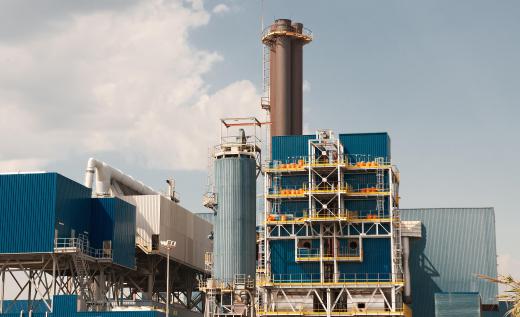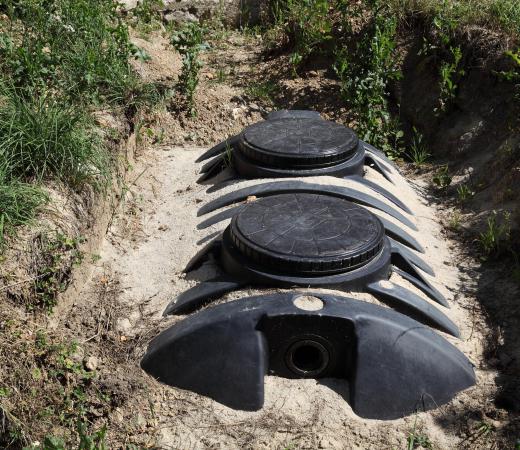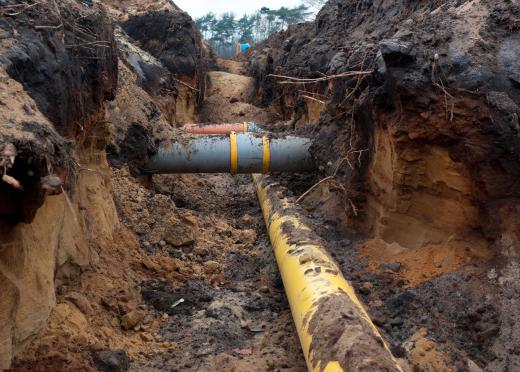A sanitation plant is a facility which treats wastewater. As water passes through the plant, it undergoes a number of processes which are designed to remove dangerous impurities, yielding water which is safe and stable at the other end of the sanitation process. Sanitation plants vary widely in size and scope, and can be found all over the world, primarily in urban areas and manufacturing centers. They are usually closed to the public, although those who are curious may be able to arrange a guided tour of the facility.
One obvious use for a sanitation plant is in the treatment of water which has become contaminated by human waste. Many disposal systems for human waste rely on transporting the waste in water, with the water being treated at a sanitation plant or in a septic tank. In these facilities, water can be treated to varying levels of purity and then released. Some sanitation plants sell their water for agricultural use, while others may distribute their water to city landscaping sites for the purpose of keeping a city green without using fresh potable water on landscaping. Others release treated wastewater directly into waterways such as rivers and streams.

A sanitation plant can also handle water which has become contaminated by other materials, such as chemicals. Some factories have attached sanitation plants which process water which has been compromised through use in the factory. These facilities may be required to treat their wastewater before releasing it into a sewer system, with the goal of removing impurities which a conventional sanitation plant cannot handle. Sanitation plants can also process greywater, in regions where sewage and greywater are handled separately.

A variety of processes and techniques can be used at a sanitation plant, depending on the type of material being handled. Basic filtration is used, along with techniques such as allowing contaminants to settle to the bottom of large holding tanks while relatively clean water is allowed to flow out of the top of the tank. Plants can also address specific issues such as known bacteria in the water or specific chemicals which may not be eliminated through regular wastewater treatment practices.

Sanitation plants may be run as a service to the public by a local government which wants to ensure that sanitation is provided for environmental health reasons, although they can also be run as a for-profit endeavor. Specialty sanitation plants such as those which attach to hospitals and manufacturing facilities are designed by sanitation engineers who address the specific needs of the system in their designs.
Ever since she began contributing to the site several years ago, Mary has embraced the exciting challenge of being a About Mechanics researcher and writer. Mary has a liberal arts degree from Goddard College and spends her free time reading, cooking, and exploring the great outdoors.

